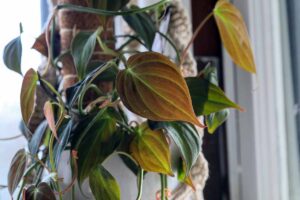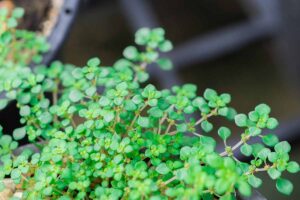If you were to do a quick search for low-maintenance houseplants, peace lilies (Spathiphyllum spp.) would be right at the top of the list because they require very little maintenance to thrive.
But now and then, leaves might die or look less-than-ideal. And what to do about those spent flowers or those brown leaf tips?
Peace lilies will sometimes lose their older leaves as they age or the smaller, new leaves at the base might die off. These need to be removed because they’re a drain on the plant.
Apart from trimming off foliage that is past its best, a light pruning can also help shape your plant.
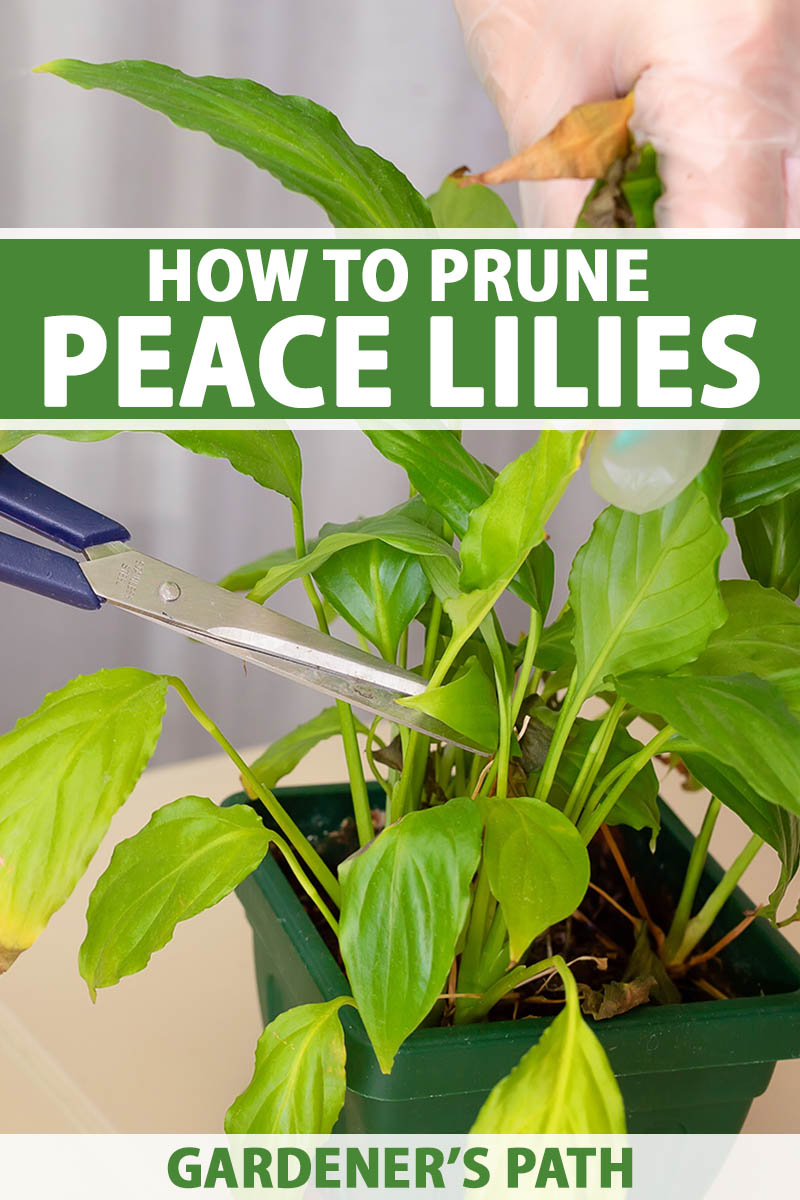
We link to vendors to help you find relevant products. If you buy from one of our links, we may earn a commission.
Our guide to growing peace lilies discusses how to take care of these easygoing houseplants.
In this guide, we’ll help you figure out how and when to prune your peace lily to deal with any brown tips, dead flowers, and ugly leaves. Here’s what we’re going to discuss:
Peace Lily Pruning
When to Prune
You can remove dead, damaged, discolored, or diseased leaves at any time.
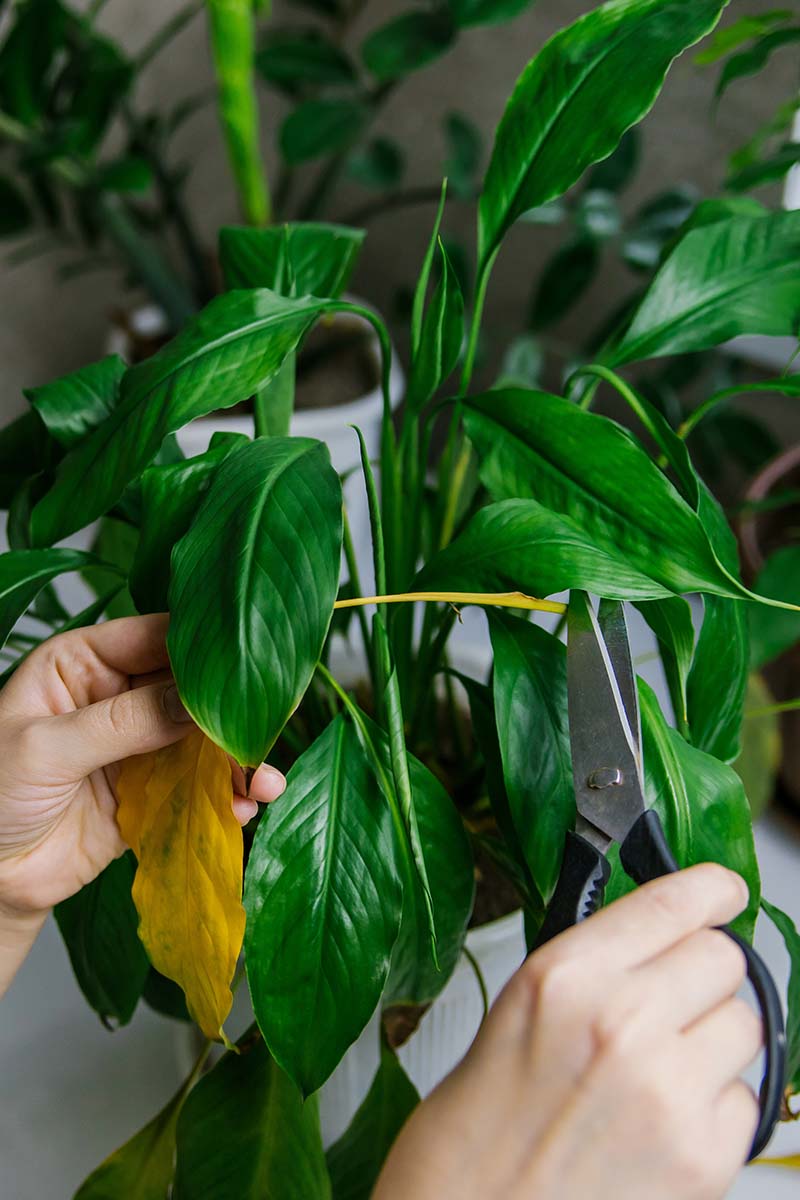
If you want to provide a little shape, do that in the spring. Try to avoid pruning when the plant is flowering because all its energy is focused on blooming.
Deadheading should, obviously, be done after the flowers have faded.
Gather Your Tools
First things first, you’ll need to gather your tools.
To make your cuts, you’ll need a clean pair of clippers and a pair of scissors.
Both should be rinsed in soapy water and then wiped with isopropyl alcohol to remove any dirt and harmful pathogens hanging out on the metal that could spread nasty diseases.
By doing some trimming, we’re trying to make our plant healthier, not sick.
Removing Dead Leaves
When a leaf dies, it needs to be removed, otherwise It will just be a drain on the plant’s energy.
You want to remove the leaf as close to the soil as possible, otherwise you’ll leave an unsightly stump behind.
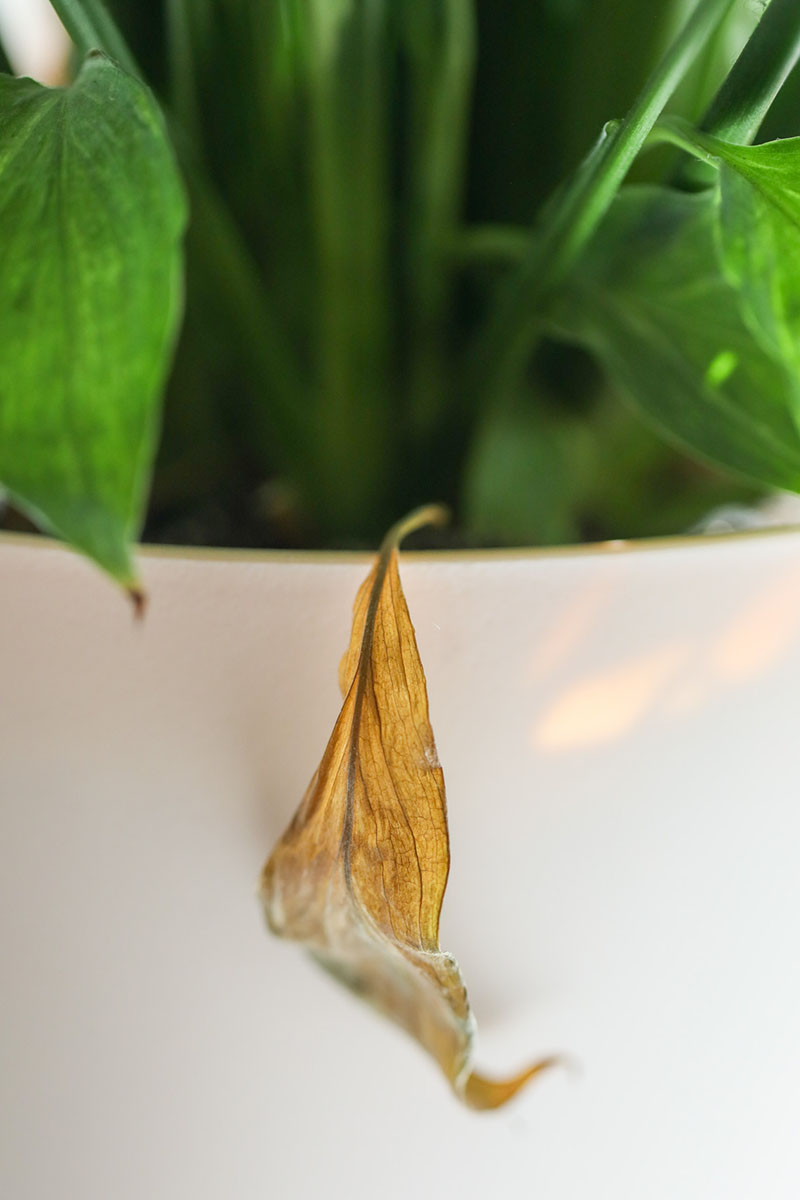
Every now and then, lift up the lower leaves and examine the base of the plant.
Sometimes, you’ll find small dead leaves or those that are turning yellow or brown. These should be removed.
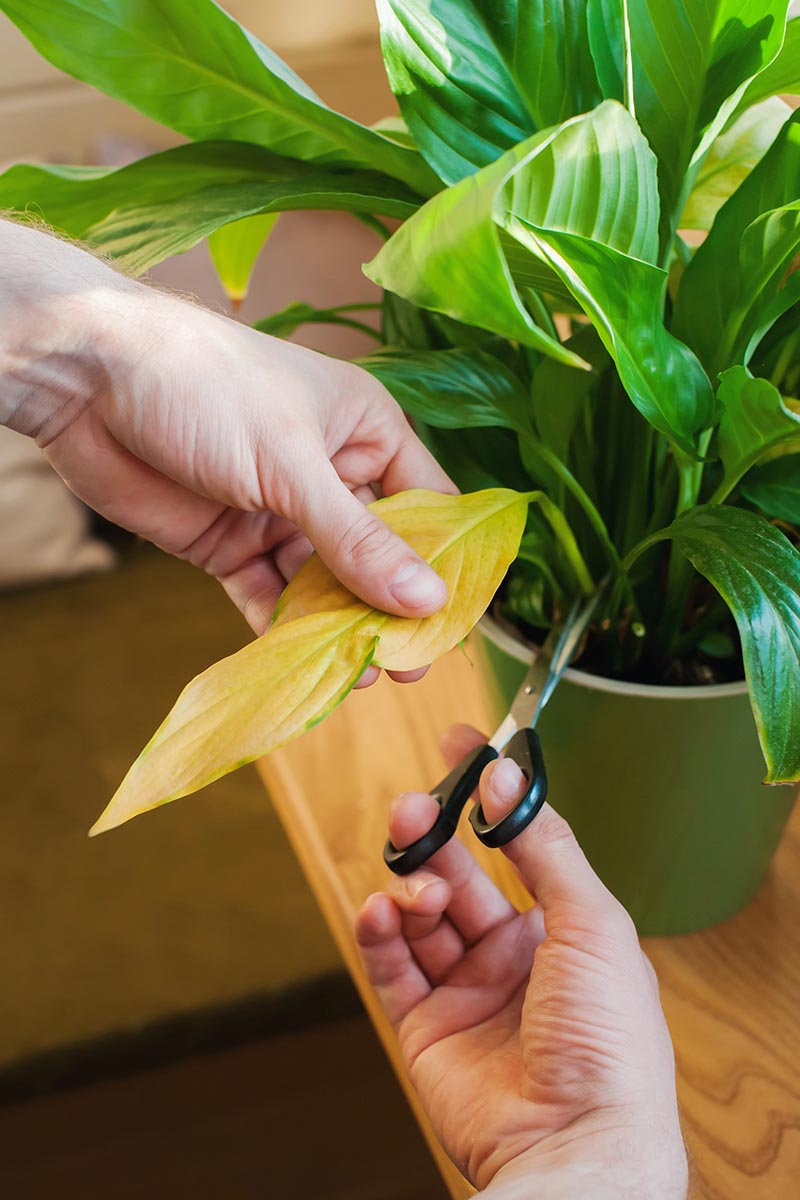
To do this, take your clippers or scissors and make a cut as close as you can to the nearest main stem or to the soil, if the leaf doesn’t attach to a stem.
Sometimes, completely brown and shriveled leaves can simply be pulled away from the plant.
Trimming Brown Leaf Tips
Peace lily leaves turn brown at the tips with the drop of a hat. Too much or too little water, too little humidity, too much sunlight, overfeeding, or extremes in temperature can all cause browning leaf tips.
Once they turn brown, they won’t regain their green color, so it’s best to just cut them off to improve the appearance of the plant.
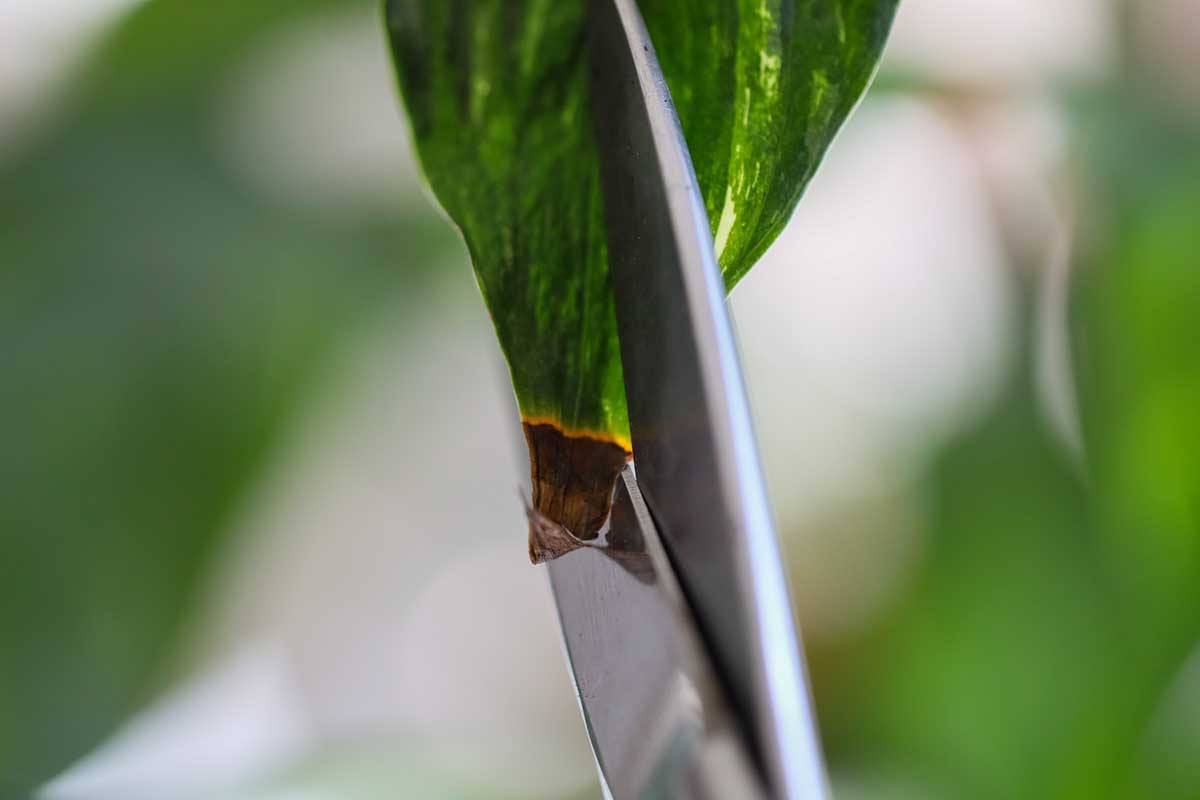
To cut the leaf tip, take your clean scissors and trim off the brown section at an angle on each side so that you recreate the pointed tip. That way, the leaf will blend in with its neighbors.
You can cut the brown part off with one flat cut, but it will be noticeable among the other leaves, which is why you want to aim to keep the tips pointed.
When you prune the leaves themselves rather than the stems, it’s important that you’re careful to use extremely sharp tools. Dull tools will crush the leaves and you’ll be left with edges that turn brown.
For more information on why the leaves turn brown at the tips and how to prevent or deal with it, visit our guide.
Deadheading
After the flowers fade, they won’t come back. You’ll want to remove that ugly brown spathe and spadix.
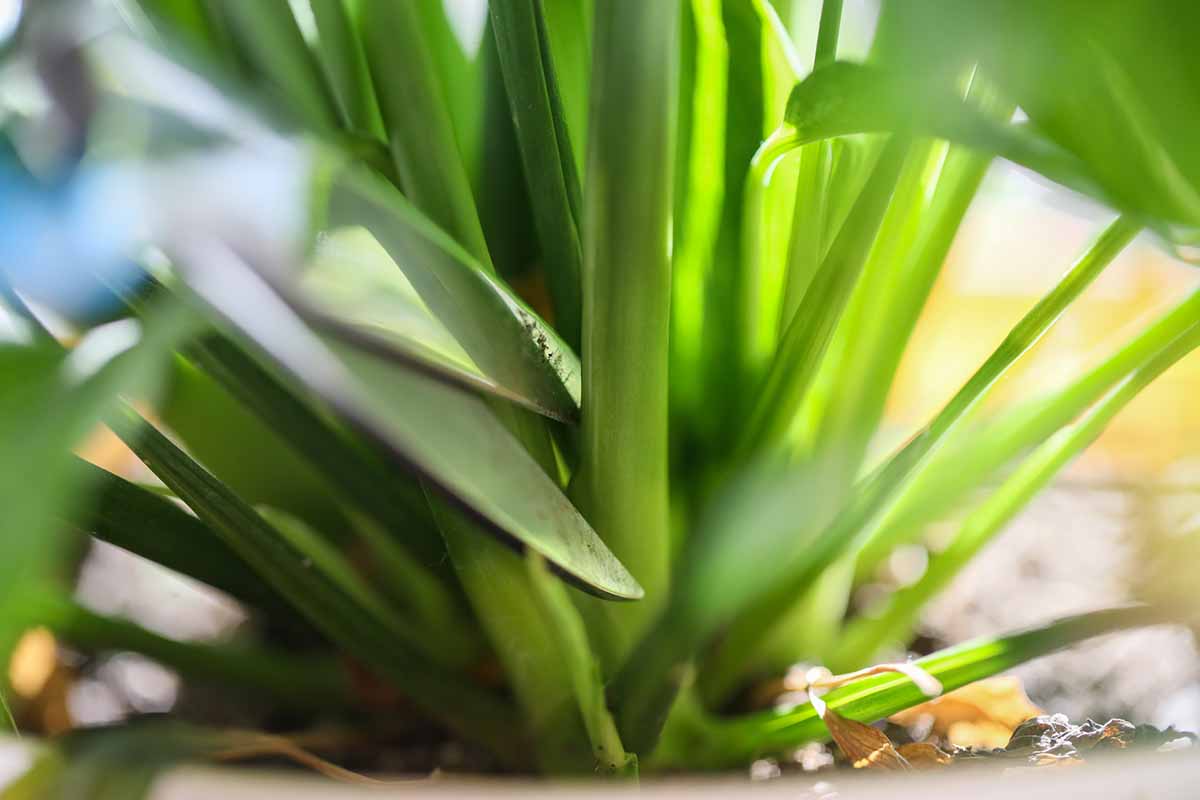
To remove this, follow the flower stem down to the base and carefully cut it away.
The stem might still be green even though the spent flower is brown. It doesn’t matter, the stem will eventually turn brown as well, so go ahead and cut it off.
Shaping Your Plant
A healthy peace lily will usually maintain a fairly attractive shape all on its own, but a period of insufficient sun might cause sparse growth, or simply forgetting to rotate your plant might make the foliage lush on one side and thin on the other.

Whatever the cause, if you want to provide your plant with some shape, use your clippers or scissors to take away any bent leaves or unattractive growth.
Feel free to snip away a few leaves from the center of the plant to thin it out a bit.
If one side is more dense than the other, take out some of the leaves here and there to thin it out, creating a more even shape.
Pretty Up Your Peace Lily
Even the most easygoing plants need some maintenance now and then.
Your peace lily will look as pretty as ever with just a little pruning, deadheading, and snipping off any brown leaf tips.
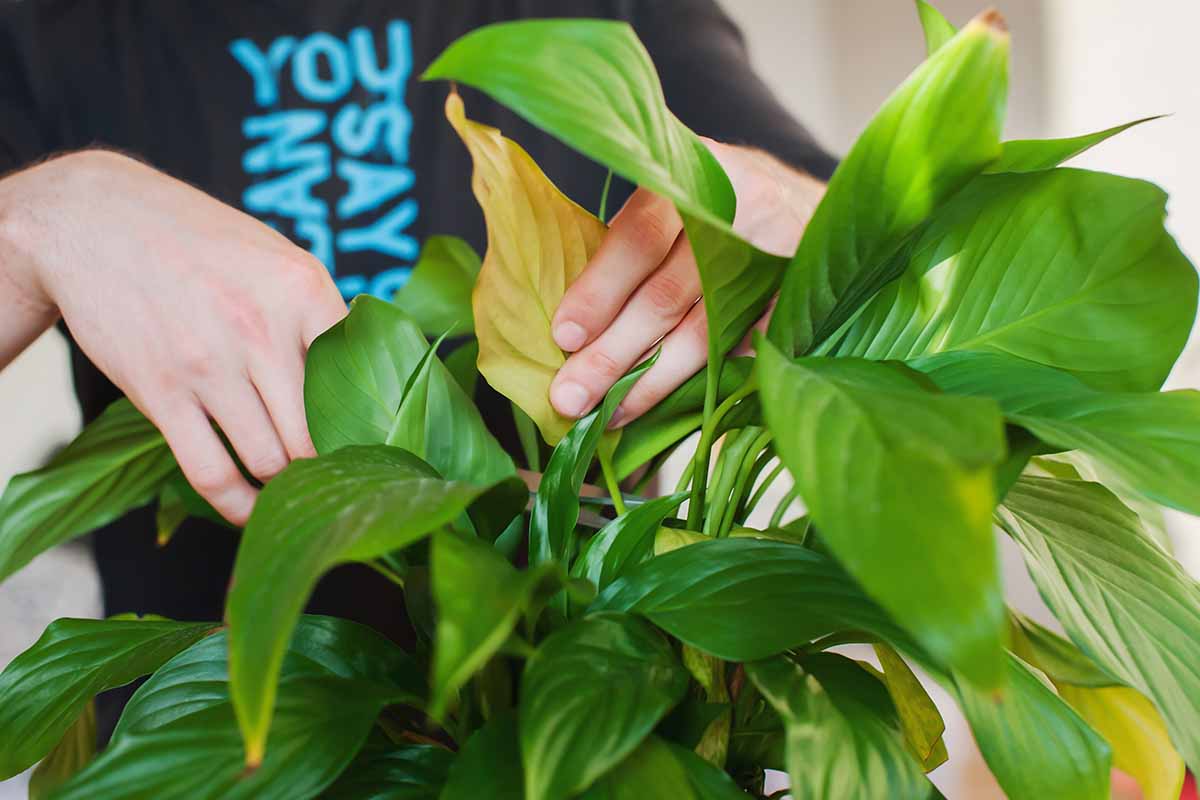
What type of peace lily are you growing? Have you pruned it recently? Share with us in the comments section below. And if your plant is losing leaves and you don’t know why, let us know. Maybe we can help!
We have much more information on how to care for Spathiphyllum plants if you’re interested. Add these guides to your reading list next:
